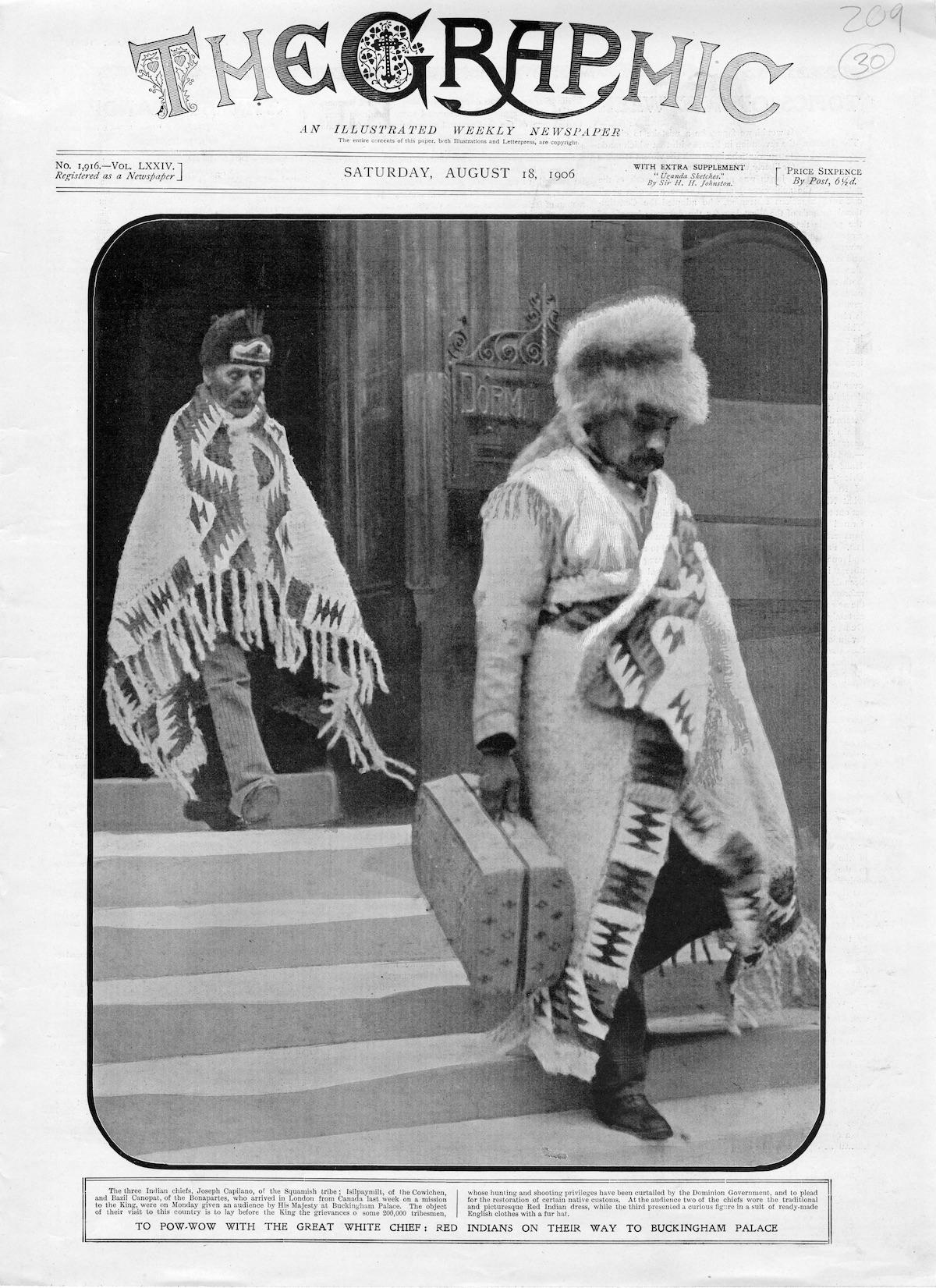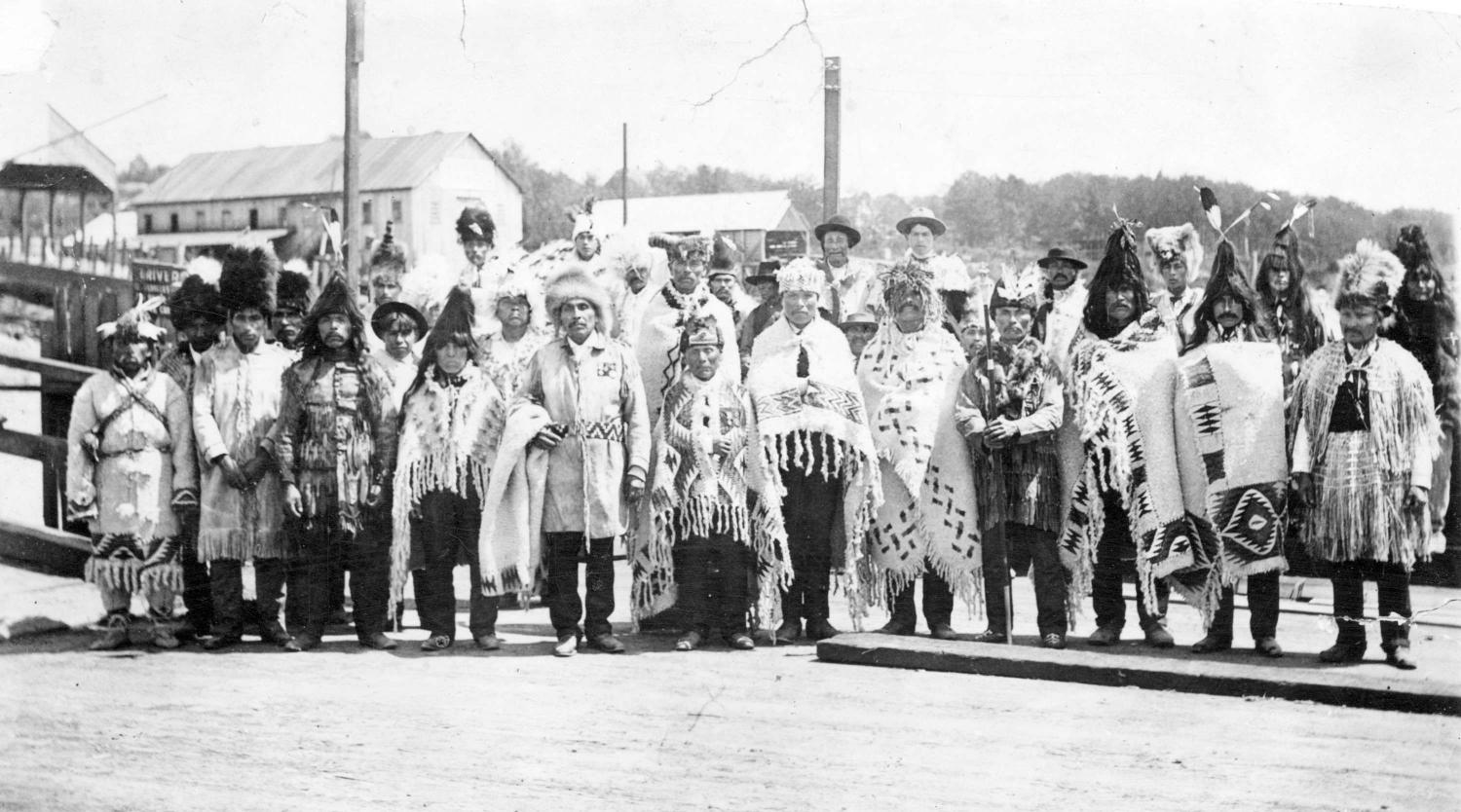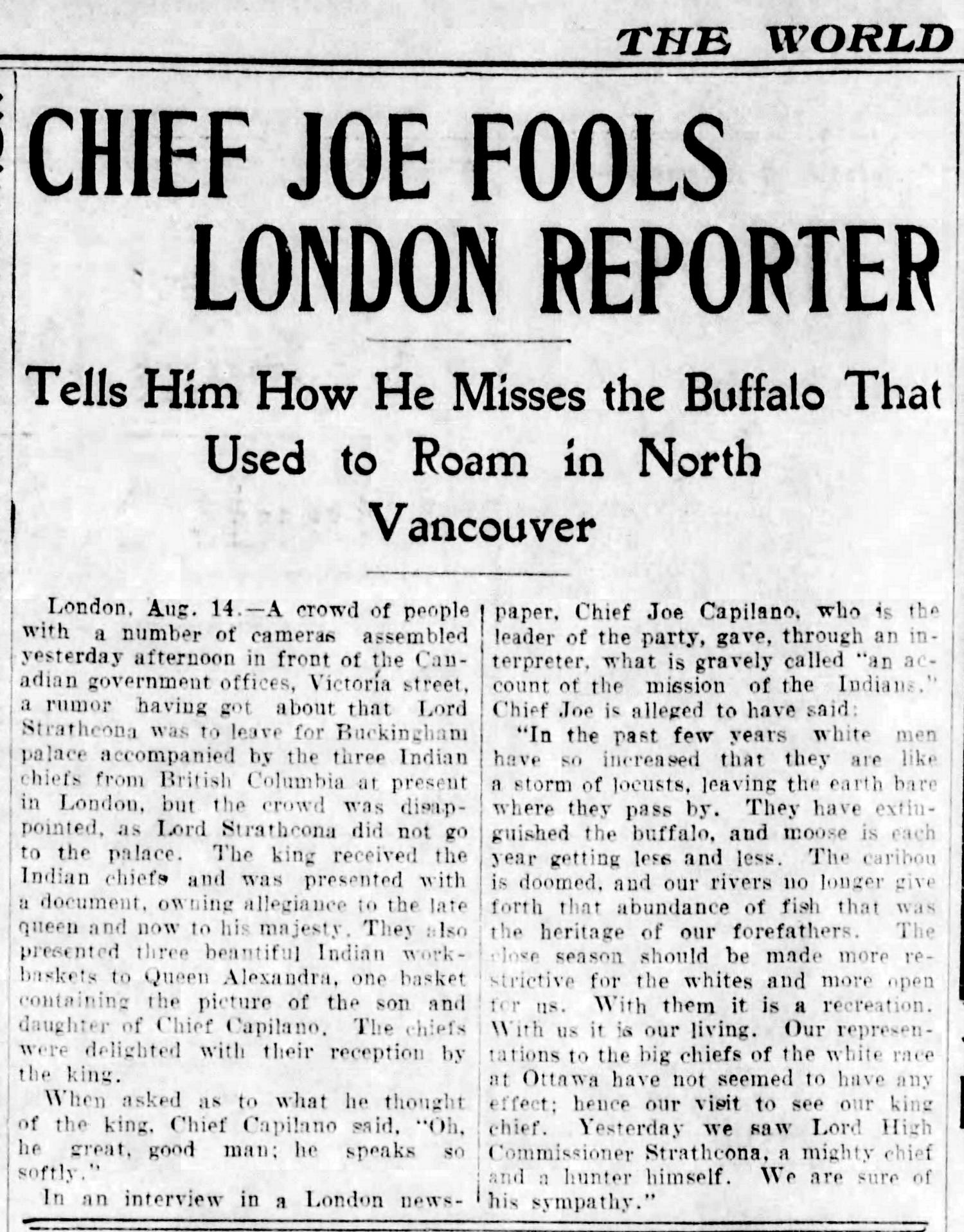The 1906 London Delegation
Salish chiefs travel to Ottawa and London to petition for their rights
Date: 1906
One day in 1906, a festive crowd was forming at Vancouver's Canadian Pacific Railroad station. Dozens of Indigenous leaders and thousands of others had gathered, a brass band playing as people sang and paraded around the station. They came to see off a man once known as Su-Á-Pu-Luck as he boarded a train bound for Ottawa. Now, though, the 66-year-old Squamish chief went by another name: Kiyapalanexw (Sa7plek), a hereditary title given to him specifically for this important trip. Outside of Indigenous circles, however, he was called by a different, anglicized mantle: Chief Joe Capilano.
With Chief Capilano were three others: a Cowichan chief named Charley Isipaymilt, the Secwépemc Chief Basil David, and a young Stó:lō man named Simon Pierre, their translator. The men and their communities were concerned about encroachment onto their traditional lands. They wanted restrictive hunting laws repealed. They wanted the Indian Act's potlatch ban revoked.
So, the chiefs decided to go to London, England and meet King Edward VII himself.
It was a bold plan designed to attract public attention. If the crowd at the station was any indication, their audacity had paid off.
But this was far from the first time that Indigenous leaders in B.C. had pushed back against the colonies-turned-dominion. For decades, different First Nations across the province had protested their treatment at the hands of white settlers. In one standout incident in 1876, more than 3,000 Indigenous people confronted Lord Dufferin, then Canada's governor general. They detailed the unacceptably small reserves, the lack of compensation for lost territory, and other governmental abuses.
But it was a 1904 linguistic conference in Europe that inspired Chief Capilano and his team. Two years prior, Douglas Lake Chief Chilihitza and Chief Clexlixqen of the Kamloops Indian Band had crossed the Atlantic to share a new writing system that had become popular in the region. With the support of the French missionary accompanying them, the two chiefs extraordinarily gained access to Pope Pius X. Their meeting was covered in the Kamloops Wawa, the Pacific Northwest's well-read Chinook-language newspaper. Members of different tribes convened in towns across the province, from Quamichan to Kamloops. Why not, they wondered, try to meet the British king?
Capilano had emerged as the movement's leader, demonstrating an affinity for political strategy. Before leaving Vancouver, he had met with politicians and the press — but kept the true mission of the trip secret until the last minute. The delegation had only unveiled their petition as the train was set to leave the Vancouver railway station. After a stop in Ottawa to meet with Minister of Indian Affairs Frank Oliver, the group sailed on towards London.
By the time the group disembarked in England, they had turned into a media sensation. Photographers and journalists constantly followed the men. Capilano leaned into his role as spokesperson, telling the press that he "carried to the king the handshakes of all 200,000 Indians in British Columbia."
Despite the attempts of the Canadian high commissioner to prevent the meeting from taking place, the Indigenous delegation made it to Buckingham Palace on July 3. "We have our families to keep the same as the white man," they petitioned King Edward VII, "and we know how to work as well as the white man; then why should we not have the same privileges as the white man?"
While the chiefs were received sympathetically, Edward VII offered nothing much of substance. Capilano and his men returned home — but not defeated. They instead were energized to take action in their own communities, finding power in one another. Capilano would spend months visiting tribes and communities around the province, raising awareness about Aboriginal rights and land title. His activity even earned him a negative reputation among Canadian authorities, who called for his arrest in 1907, charging him with "inciting Indians to revolt."
But that ultimately didn't matter. "Among his own people," historian Robin Fisher later wrote, "he remained a leader of dignity and power."
Sources:
- Carlson, Keith Thor. "Rethinking Dialogue and History: The King’s Promise and the 1906 Aboriginal Delegation to London." Native Studies Review, vol. 16, no. 2, 2005.
- Galois, R. M. "The Indian Rights Association, Native Protest Activity and the ‘Land Question’ in British Columbia, 1903-1916." Native Studies Review, vol. 8, no. 2, 1992.
- Griffin, Kevin. "Canada 150: Joe Capilano Rose to Prominence with 1906 Visit to King Edward in London." Vancouver Sun, 10 May 2017, https://vancouversun.com/news/local-news/canada-150/canada-150-joe-capilano-rose-to-prominence-with-1906-visit-to-king-edward-in-london.
- Wilson, Stevie. "YOU SHOULD KNOW: More About Local First Nations Leader & Icon, Joe Capilano." Scout Magazine, 2 May 2013, https://scoutmagazine.ca/2013/05/02/you-should-know-more-about-local-first-nations-leader-icon-joe-capilano/.





